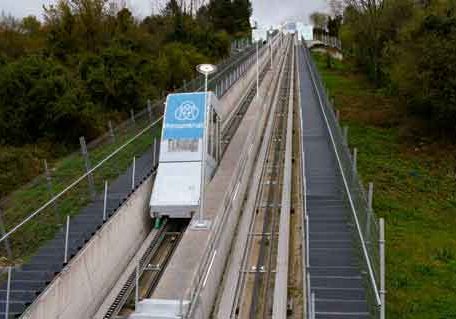Ensuring safety and eliminating waste are key goals of the upkeep program.
“Periodic maintenance” refers to the maintenance processes carried out periodically — typically, every month — after the commissioning of the elevator by the elevator assembler or authorized service provider. This is done to ensure the elevator meets the maximum safety requirements or new code revisions, in accordance with current legislation, over the lifetime of the system. The purpose of periodic maintenance is to ensure the operating health of this electromechanical system, to prevent loss of life or permanent injuries, as well as to minimize operational waste.
The following are maintenance points that should be performed once a month for elevator cars and doors:
- Doors must be checked thoroughly for dust and corrosion. (Acidic cleaning products must never be used on door panels.)
- Rails and rail pulleys must be cleaned.
- Threshold ducts on which the panels move must be cleaned.
- Steel ropes on the panel conveyors must be examined every six months, and refraction detection must be performed.
- If vibration is detected in the car and door panels, this may be caused by worn or broken rail pulleys or dust accumulation between the rail and pulley. In such cases, cleaning must be done, and worn materials must be replaced.
- If the lower part of the panel drags 10-20 mm behind or generates noise when the panels move, the throttle adjustment must be checked.
- Door locks and lock components must be adjusted to ensure proper operation.
- Proper spacing of safety contacts (plug contacts) must be checked and adjusted as needed, and any oxidation present in the contact springs must be removed.
The mechanical health of an elevator more than 10 years old is best ensured through modernization, not simply through periodic maintenance. The maintenance of old elevator systems may allow the decay of primary system requirements and may result in deficiencies being ignored, especially in cases of constantly increasing load and traffic intensity.
Why Modernization?
The secure lifetime of elevators is about 10 years. The dynamic components making up the system are subject to wear over time because of friction caused by the force/ acceleration relationship, and operating efficiency of elevators decreases because of metal fatigue. Dynamic parts exposed to continuous tension constitute the basic safety gear of the elevator. The mechanical health of the system must be emphasized to ensure safety features operate efficiently and safety criteria are met. Renovation of the elevators puts them in accordance with safety criteria per the relevant elevator directives, offers energy savings, allows for higher speed and more comfort, and gives the elevator a modern and aesthetic appearance.
Get more of Elevator World. Sign up for our free e-newsletter.







